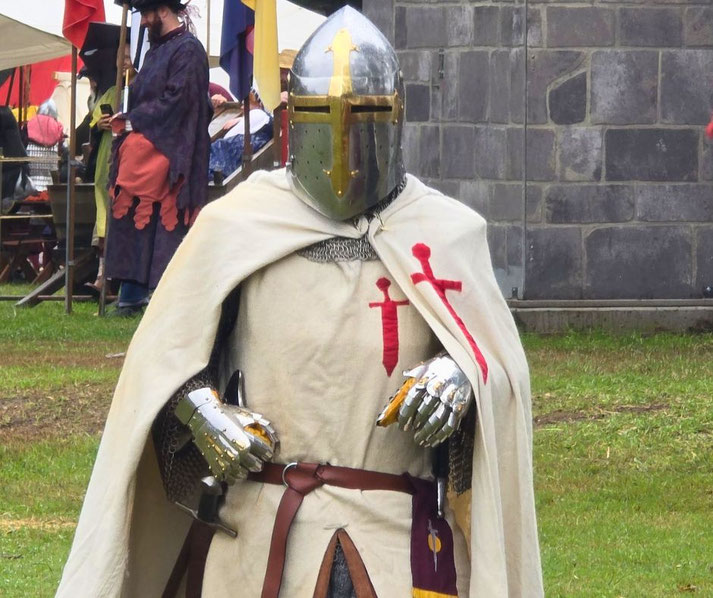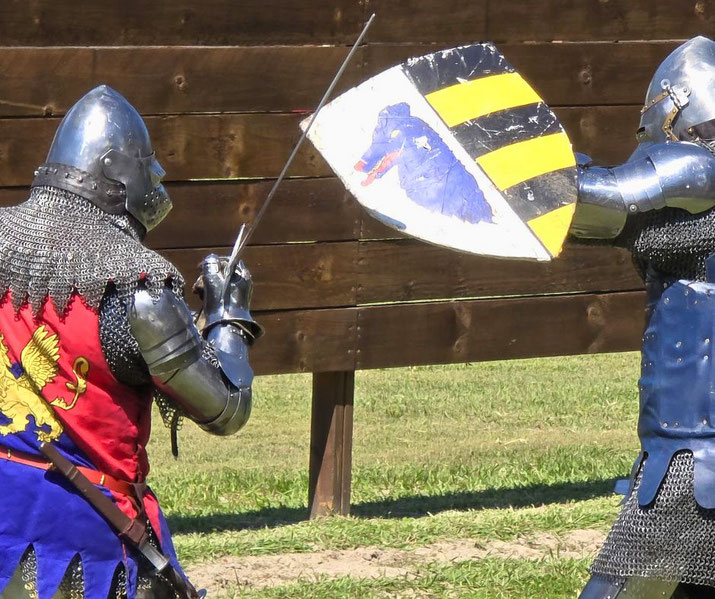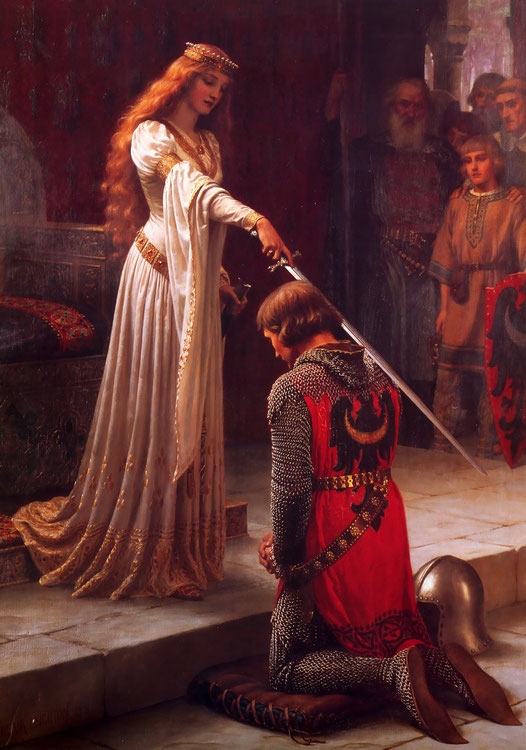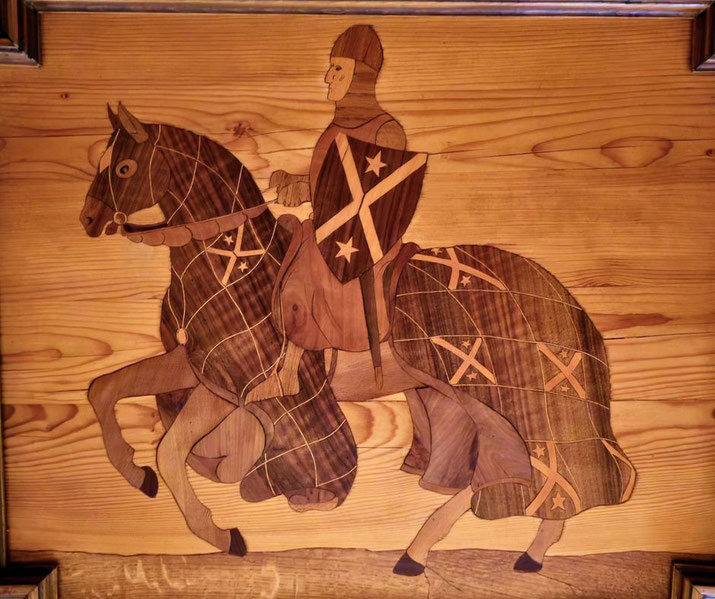What were medieval knights?

Knights were a class of warriors in the Middle Ages who served lords and monarchs in military matters.
Knighthood was more than a military role; it was a social rank and a lifestyle. Knights participated in tournaments and jousts, which were popular social events and provided occasions in which they could demonstrate fighting skill.
Over time, the ideals of knighthood and chivalry became idealised, which contributed to the iconic image of the knight as a noble and gallant warrior.
Historical development of the knight
The knight was a medieval warrior who fought on horseback. He was heavily armoured and carried a sword and shield.
The development of the knight began before the Middle Ages, with origins traceable to the 8th century under Charlemagne.
Knights became more important as mounted warriors during the 10th and 11th centuries.
Knights were at the heart of the feudal system, a social hierarchy that dominated Europe during the Middle Ages.
In exchange for their military service, knights were granted lands, known as fiefs, from their lords, which they ruled and earned income from.
This system of duties (known as "mutual obligation") tied together society and politics.

Role in battle
The primary role of knights in battle was to fight on the front line and protect other members of the army.
They were also used to chase enemy troops who had been defeated and could be useful in sieges and ambushes.
The evolution of warfare, which followed when armies adapted their tactics, advanced battlefield technology and reorganised their forces, contributed to changes in the role of knights in battle.
One of these developments was the adoption of heavy plate armour, which made knights better protected against sword blows and spear thrusts from enemies mounted on horses.
This new armour allowed knights to fight on foot, and the mounted knight became less important in battle.

Battle of Hastings in 1066
The Battle of Hastings in AD 1066 was a key battle between the Normans and the Anglo-Saxons.
The Norman knights, who were equipped with chain mail armour, proved to be a powerful force against the Anglo-Saxon troops, many of whom were only armed with shields and swords.
Knights played an important role in this battle, as they used a tactic known as 'feigned flight' to lure the Anglo-Saxons into a false sense of security before attacking them from behind.
This tactic was successful in defeating the Anglo-Saxons and led to the Norman conquest of England.
The code of chivalry
Knights were governed by a code of chivalry that set their behavior both on and off the battlefield.
The code of chivalry stressed honour by requiring knights to remain courageous and to show loyalty to their lords. Knights were expected to protect the weak and innocent, and to show mercy to their enemies.
They were also forbidden from harming women and children or looting the possessions of those they had defeated in battle.
The Catholic Church helped develop this code because they saw that a moral code for warriors was important.
The Church saw the knight as an important tool in their fight against heresy and believed that knights who upheld Christian values would be more effective in battle.
It's important to note that the chivalric code was not always followed across Europe, and its meaning could vary.

Jousting and tournaments
Knights took part in jousting and tournaments to sharpen their fighting skills. People saw these events as entertainment and often gathered to watch.
Jousting was an event where two knights would charge at each other on horseback, who held shields and lances, with the aim of knocking the other person off their horse.
Tournaments were similar to jousting but included several knights who fought at the same time.
How to become a knight
In order to become a knight, one had to be born into a noble family and get training in combat skills from an early age.
Young men could become a page at the age of seven and would serve a knight or lord, called a liege, to learn the skills needed to become a knight.
Often, a young man was sent on a quest by his lord to test his combat skills and bravery.
If he was successful, he would be given knighthood once his lord considered him ready, since there was no set age for becoming a knight.
Factors such as training and experience could affect when a lord granted knighthood.
Then, the young man would be knighted by his lord and given armour and weapons.
Knights were expected to fight for their liege in battle, but could also choose to become soldiers for hire who fought for whoever paid them most.
The Church did not support this practice because they believed knights should fight only for proper and fair causes rather than to earn money.
The knighting ceremony
One of the most important parts of becoming a knight was the ritual when he received his armour and weapons.
This usually took place after many years of training, and went through these steps:
The young man who was to receive knighthood would be stripped down to their underwear, with all their clothing removed except for a belt.
The king or lord would use a sword to tap each of the young man’s shoulders to officially give him knighthood.
The new knight would then promise to protect his king and his lands.
The young man would then be given a new set of clothing, and he was given a suit of armour and a helmet.
He would also receive weapons such as swords, lances and shields. Finally, he would be presented to the public and ride on horseback to display his new rank as a knight.

Decline of knights
Knights became less important during the 15th century, when gunpowder and cannons started to be used in battles.
These weapons worked better than swords and lances because they could hit targets from a distance without contact.
The idea that only noblemen could become knights also meant that commoners were excluded from becoming one themselves.
This was unfair because many commoners wanted to fight, but could not afford expensive armour like wealthier knights.
As warfare changed, the role of knights became less important, and the idea of a knight slowly faded.

Further reading
What do you need help with?
Download ready-to-use digital learning resources
Copyright © History Skills 2014-2025.
Contact via email
With the exception of links to external sites, some historical sources and extracts from specific publications, all content on this website is copyrighted by History Skills. This content may not be copied, republished or redistributed without written permission from the website creator. Please use the Contact page to obtain relevant permission.





